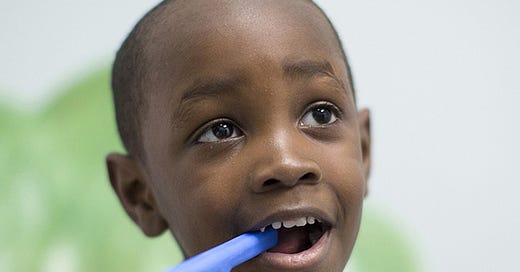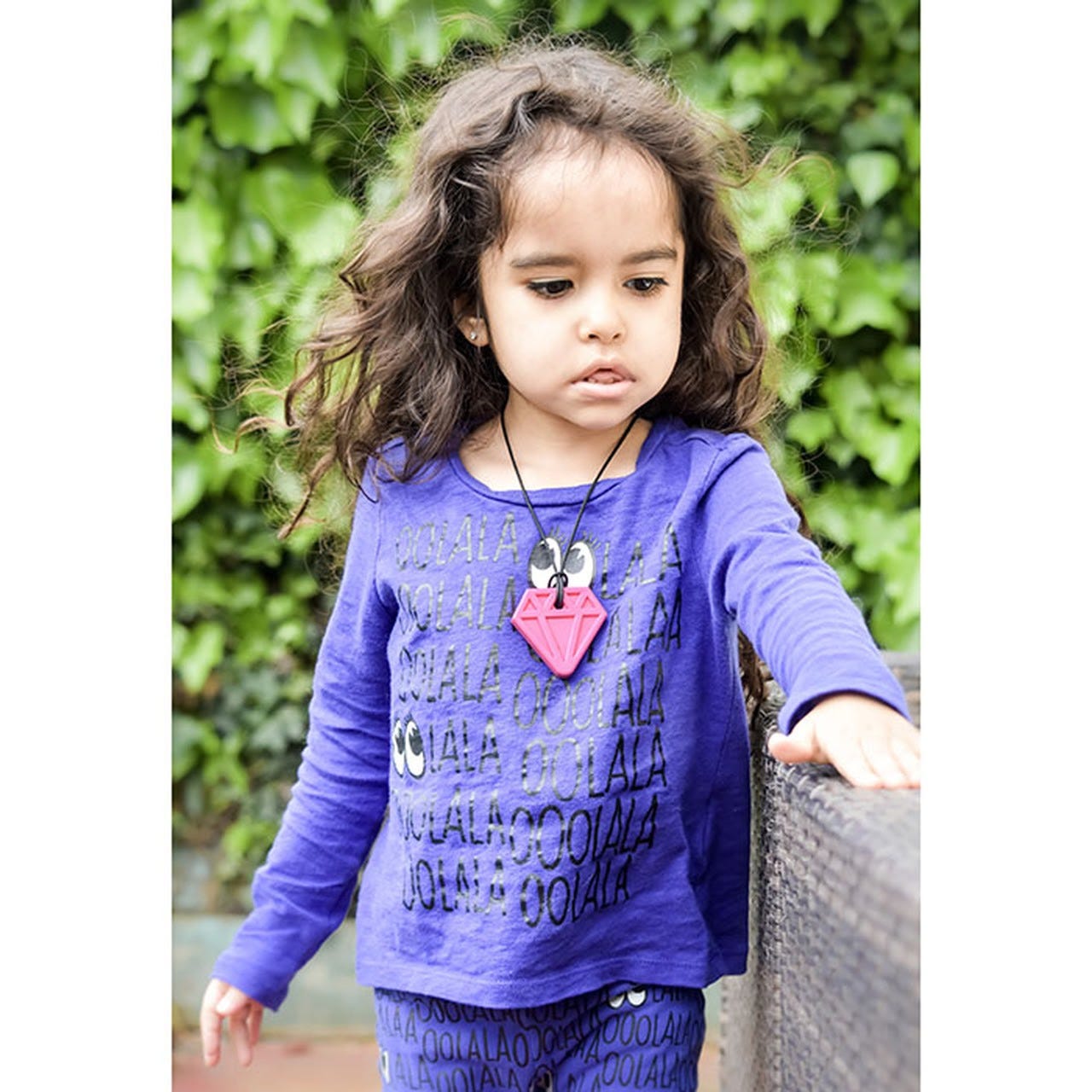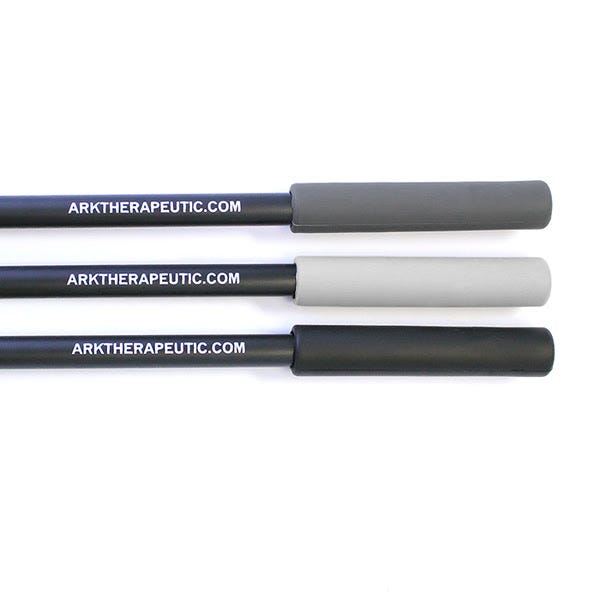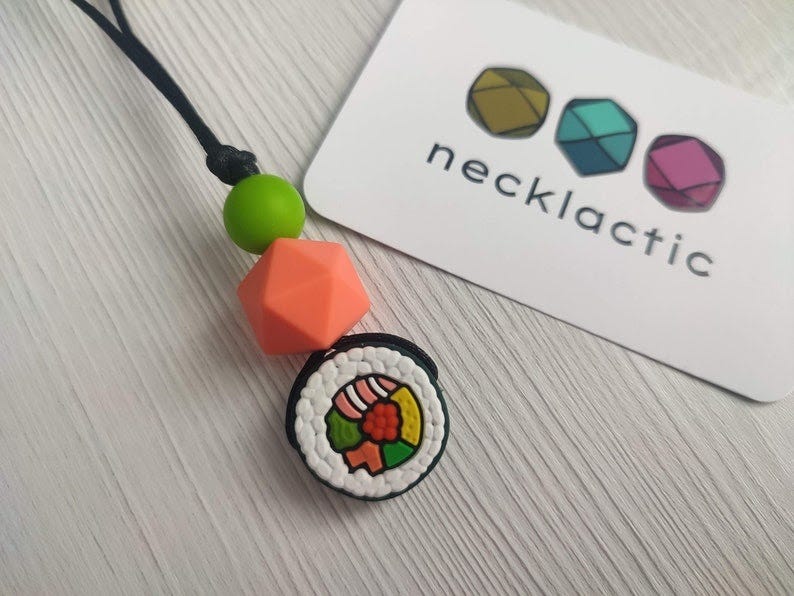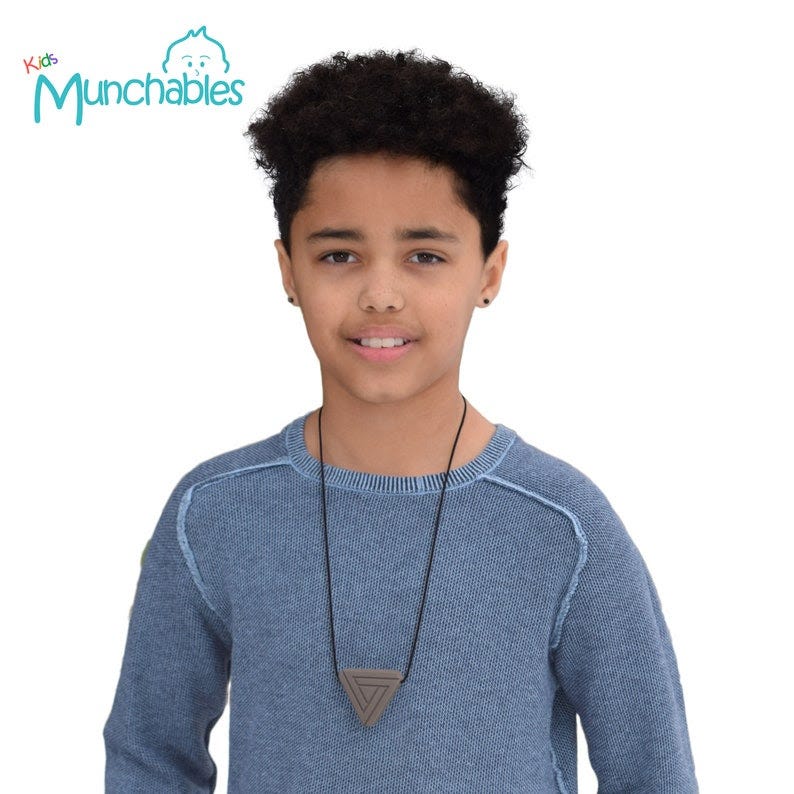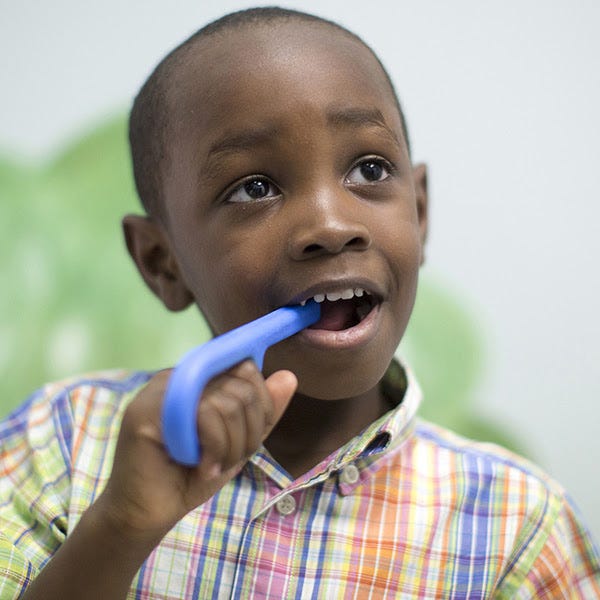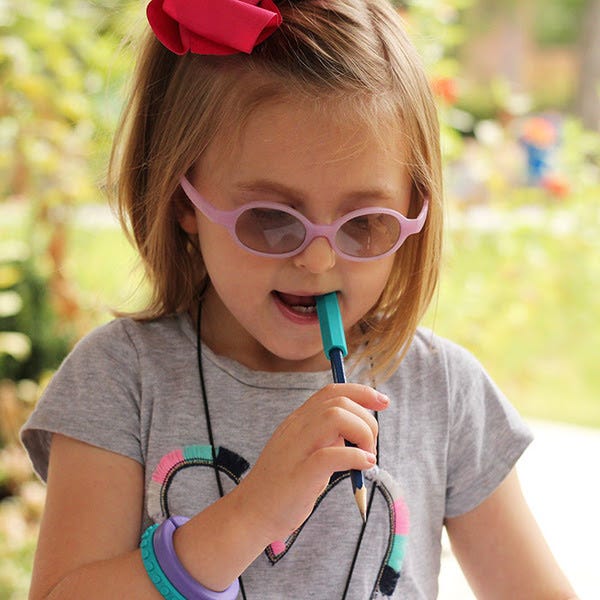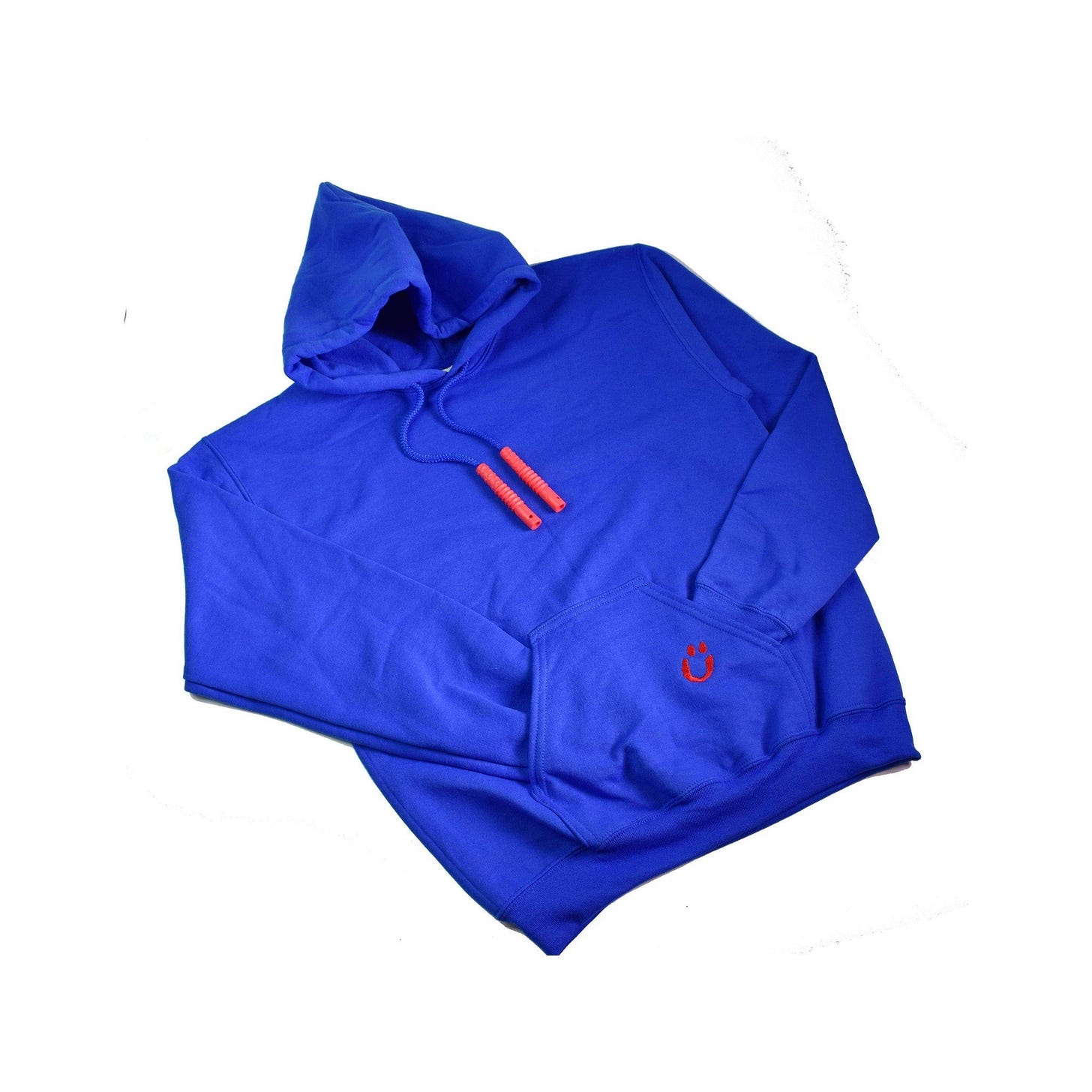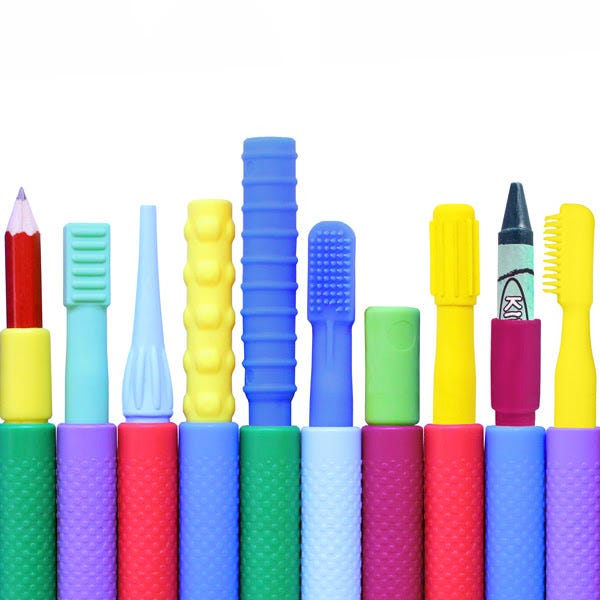An Unmet Demand: The Market for Oral Sensory Chews
And a database of over 300 sensory chews crafted by yours truly.
This week I’ve created a database of over 300 oral sensory chew products. The database contains a number of attributes including:
Product name
Sensory chew type
Price
Description
Product image
Product URL
Vendor
It is able to be filtered and sorted by all of the attributes. Here’s a quick screenshot of what you’ll see when you enter it.
Those of us already familiar with these products lovingly refer to them as sensory chews or chewies. If you’re new to them, you may have clicked the link and be wondering what these are for! 5%-16% of the general population experiences a sensory processing disorder (formally referred to as sensory integration dysfunction and shorthand SPD). It is especially common in those with ADHD, Autism, and a handful of other Neurodiverse folks. Everyone experiences SPD differently, but one common trait is a need for oral sensory input, and that’s where these fun sensory chews come in!
What is a sensory chew?
Each user group for sensory chews is looking for something slightly different in a product, but all with similar characteristics:
Made of non-toxic materials (often medical grade)
Durable (won’t break off in their mouth or fall apart after a short time of use)
Meeting their sensory needs (different shapes, textures, and firmness)
Fashionable (meets the style preferences of the user)
Safe shape/form for the user (not able to choke on it, a breakaway necklace if needed)
Who uses them?
While there isn’t extensive research on the demand for specifically oral sensory chew products, it is safe to say it is a growing market. The current leaders in the market are releasing new products at a quick pace, and with the growing awareness and support of the Neurodivergent community, this will likely continue to increase. The current users are:
Neurodivergent folks (adults & children)
People trying to quit smoking
Parents of infants
Toddlers
The largest user groups are Neurodivergent users and parents, so we’re sticking with those user groups today. Of course, my particular passion is ensuring this database helps meet the needs of Neurodivergent folks. The need for oral sensory input is real for many of us. Having something safe and comfortable to get that input from is essential, rather than chewing on something unsafe or attempting to suppress the need altogether.
Children
At this time, the majority of sensory chew products are geared towards Neurodivergent children. They’re made with loud colors, fun shapes, and even favorite characters. Most retailers gear their marketing towards this group and their parents, but may be overlooking the fact that they are growing up.
Adults
Neurodivergent adults make up another large userbase for sensory chews. However, there is an extremely limited, if any, number of companies that manufacture sensory chews specifically for adults that are not identical to their children’s products or created for parents of infants. Now I may get pushback here as some companies claim to make products for adults and some adults don’t mind wearing the current offering of sensory chews. But I would like to see products for adults that any adult would be proud to wear to work, a party, or any other social function - not a large silicone “O” shape hung from a nylon cord advertised for adults. This seems to be the current marketing strategy towards adults.
Most adults looking for sensory chews want something that meets their sensory needs while also meeting their sense of style and manufactured with quality products. Companies are beginning to create these, but are slow to do so, and generally not doing so for chewelry (chewable jewelry).
Most adult products, like pictured above, don’t have much personality, and they’re quite rare. While these are a good start, there’s a much bigger demand for the products than is currently being met.
Parents
A subset of sensory chews are breaking into the market for parents with infants or toddlers that would typically pull or chew on parent’s jewelry. Chewelry is now being created so children are able to chew on parent’s jewelry while the parent is looking their best and keeping their child safe. A hot trend is to create matching chewelry for the child, matching pacifier clips, and accompanying jewelry that matches the set.
This trend is meeting the need of parents while also creating more fashionable options for Neurodivergent adults.
Picking up the slack
With the significant demand for fashionable sensory chew products - especially for adults, people have taken it upon themselves to create them. Most makers started creating sensory chews for themselves or people in their lives that needed the products, then realized there is significant demand and began selling them. Etsy is now a large supplier of sensory chews and I even included some makers in my database.
Popular sensory shops on Etsy have 40k-50k sales - and customers are loving them. Even more specific shops sell silicone beads where users can make their own sensory chews, and have hundreds of thousands of sales.
Not only are these makers supplying products for a large unmet demand, but they’re also creating products based directly on customer requests, making them the main go-to for many adults looking to purchase sensory chews.
The chewable necklace below is personally one of my favorite finds while writing this piece and I just had to share - a sushi-themed piece of chewelry. By the time I completed writing this they were already sold out.
These specific pieces of chewelry made for teens or adults are in high demand, make meeting sensory needs more accessible for everyone, and are a wide-open market. Individual makers are beginning to pick up the slack at the moment where the current demand is not being met, but there is still a large need for new products and producers.
In production: how the database is broken down
Now that you know what a hot topic sensory chews are, let’s get to the fun of it! We already know a sensory chew is something safe and durable enough to chew on, but there’s a whole world of products. My database (and most companies) break them down into the following categories:
Chewelry
Handheld
Pencil topper
Clothing
Accessories
Chewelry
Chewelry is one of the most popular types of sensory chews. Essentially, it’s simply a chewable piece of jewelry! Most chewelry is strung by a piece of nylon cord and accompanied by a breakaway plastic clasp. Chewable bracelets are a less common form of chewelry.
Handheld
Handheld chews are also extremely popular. Any type of sensory chew someone holds rather than wearing typically fits into this category.
Pencil Topper
These could be in the accessories category, but there is such a big demand for pencil toppers they get their own category. No more chewing off the tops of your pens or pencils - now there’s a safe alternative!
Clothing
Not a ton of companies create sensory chew clothing, but there’s certainly a demand for it. Hoodie strings being destroyed from chewing is real, and at least one company is creating a fun (and replaceable) product to help.
Accessories
Sensory chew accessories can get wild when it comes to the variability of what is created for this category, and it’s a bit of a catch-all. Spare parts for chewelry fit into this category, but there’s a ton of new accessories coming onto the market such as lanyards, refillable sensory chews, retractables, bookmarks, and even a pencil case set. Personally, the pencil case set was one of my favorite finds while writing this post.
As a previous special education teacher, many of my students would have loved to have their own calculator, ruler, pencil case, and other educational tools that won’t break if a little chewing is involved :)
Additional features
On top of being safe, enjoyable, and durable, some sensory chew products come with additional features: discrete, flavored, and even vibrating.
Discrete
Contrary to popular belief, children with SPD or Autism don’t outgrow it - many people just get better at masking it.
A large number of adults that are out in the world prefer not to wear the sensory products that are currently being produced as they’re full of loud colors, nylon necklaces, and generally not in line with current adult fashion trends. Discrete options try to remain low-key for the user as well as keep up with the latest fashion trends so the user is happy to use them at work, out with friends, and anywhere else they go on a daily basis.
Flavored
One main manufacturer of safe (keyword is safe) flavored sensory chew products is on the market at this time, Chew Stixx. Rather than selling to customers, Chew Stixx focuses its efforts on innovating products for consumers and partners with key distributors to sell its goods. They create sensory chews in a variety of different flavors and have surprisingly great reviews for the fact they create flavored sensory chew products.
Vibrating
Vibrating chews are rather new to the market and at this time particularly geared towards therapy products, although they are becoming more popular with at-home users. ARK Therapeutics has been the innovator in this niche with their Z-Vibe. The Z-Vive is a clever handheld oral motor therapy tool that allows users to swap between a huge array of tips and handles - the tips vary between anything from a spoon, sensory chew, and even insert your own crayon or lollipop. They also provide repair parts on their website, which is essential for people using this tool on a daily basis.
Takeaway
Oral sensory chews are a safe way for people in all age categories to get their oral sensory needs met. Companies are already making these products for children and beginning to make them for parents. Individual makers are picking up the slack to meet the demand to create fashionable ones for adults. As awareness and support for sensory needs continues to grow, so will the market for these products. My hope is more makers and companies will create fashionable sensory chews so everyone is comfortable using them wherever they go throughout their day, as it makes life incredibly more accessible.

